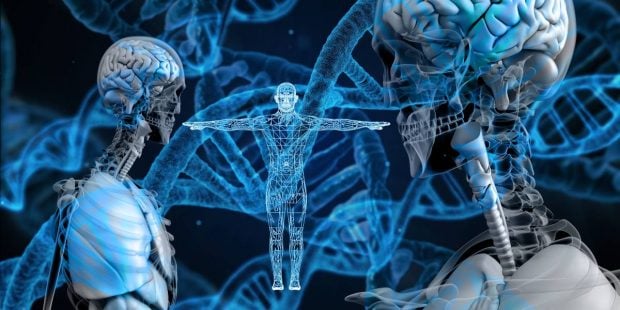The development of Crispr 3.0 is a milestone in the history of biotechnology. It is the third generation of the genetic editing system and was presented in 2024 by the outstanding scientist Samuel Sternberg.
CRISPR 3.0 exceeds the limitations of the previous versionssince it establishes a new standard of precision and efficiency in the manipulation of genetic material. It represents a qualitative leap in the ability to read, write and edit the code of life and has multiple applications in various fields. Let’s see.
What is Crispr 3.0?
Crispr 3.0 is The third generation of CRISPR technologywhich includes significant improvements and modifications with respect to its predecessors. While CRISPR-CAS9 allowed scientists to cut and paste DNA fragments in a relatively simple way, CRISPR 3.0 introduces a series of advances that increase precision, reduce unwanted side effects and expand the potential applications of genetic edition.
Main characteristics of CRISPR 3.0
- Improved precision: one of the main challenges of the genetic edition has been the Possibility of introducing errors during the process. CRISPR 3.0 uses new proteins and delivery systems that allow scientists to perform more accurate and specific editions, minimizing unwanted cuts in the genome.
- Epigenetic edition: unlike the previous versions, which focused mainly on the modification of DNA, CRISPR 3.0 Also allows the edition of the epigeneticswhich means that scientists can modify the way genes are expressed without altering the DNA sequence. This opens the door to new therapies that could correct diseases without the risks associated with permanent changes in the genome.
- “Clean cut” system: CRISPR 3.0 introduces an editing system that allows researchers Make DNA cuts in a cleaner waywhich reduces the possibility of unwanted insertions or deletions. This is crucial for applications in genetic therapy, where precision is essential to avoid adverse effects.
- Increased flexibility: the new generation of CRISPR includes Tools that facilitate the edition of multiple genes at the same timewhich could be vital to treat complex diseases that involve multiple genetic routes.
Background
The original Crispr system revolutionized molecular biology. Allowed genetic modifications with relative easefor the first time in history. However, versions 1.0 and 2.0 had important technical limitations.
The main obstacle was the frequent “off-target” effects. Such effects led to Genome cuts will be made in unwanted areaswhich caused accidental mutations.
Another problem was that the natural mechanisms of cell reparation of DNA did not always work optimally. This gave rise to errors in the genetic sequence edited.
CRISPR 3.0 and its development
The appearance of CRISPR 3.0 Solve several of the problems that the previous versions had. This method uses specialized recombinated enzymes, instead of traditional nucleas such as Cas9, which worked by cutting both chains of the double dnus.
Specialized recombinated enzymes have the ability to insert or replace specific genetic sequences, without breaking the structure of the DNA. This mechanism is obviously more sophisticated and drastically reduce errors. It also makes the genetic editing process cleaner and more controlled.
Additionally, a Chilean research team of the Andrés Bello University Plant Biotechnology Center developed a complementary application of this technology. It is a system capable of regulating gene expression with extraordinary precision, which achieves an efficiency ten times greater than conventional methods.
The Chilean team It managed to minimize unwanted effects, through the use of modified guide RNA. This has marked an important advance in plant genetic engineering.

Main applications
Crispr 3.0 has enormous potential to be applied in various fields. At the moment, its impact has been felt especially in two fields: agriculture and medicine.
Agricultural applications
CRISPR 3.0 Allows you to design crops with improved characteristics more precise and safely than ever before. It makes possible to develop varieties of plants resistant to extreme environmental conditions, such as prolonged droughts or soils with high salinity.
The scientists did tests with a model plant called Thalian Arabidopsis. They managed to become remarkably more tolerant of water scarcity. This could extend to commercial crops such as wheat or corn.
The same way, There are fascinating possibilities to improve the nutritional value of food. Projects are already being developed to create tomato varieties higher vitamin D or iron rice. This without the need to introduce foreign DNA as is the case with traditional transgenics.
Medical applications
CRISPR 3.0 will allow treating genetic diseasesreducing the risks associated with traditional gene therapies. Conditions such as cystic fibrosis or falciform anemia could be treated by the exact correction of genetic errors, without affecting the rest of the genome.
Likewise, researchers are modifying T -system T cells for Improve your ability to recognize and destroy cancer cells. Another innovative application is the use of CRISPR systems adapted for the detection and rapid diagnosis of pathogens such as viruses or bacteria.
Risks
Crispr 3.0 also raises some ethical and legal concerns. Its use in germ cell edition is particularly controversial (ovules and sperm). Any modification in these cells would be inheritable by future generations.
Another worrying aspect is unequal access to these technologies. There is a risk that the benefits are concentrated in developed countries. It is possible that high costs lead to CRISPR 3.0 is only available for a few.










